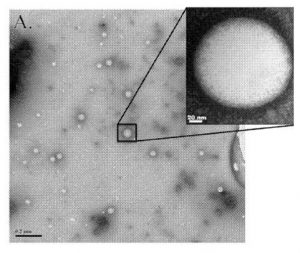Brush amphiphilic block copolymers for drug delivery

Tech ID
17-011
Inventors
L. Sadowski
T. Hoare
H. Luo
M. Badv
Patent Status
US Patent 10,774,169
CA Patent 2,972,926
Stage of Research
Proof of principle data is available
Contact
Amy Hector
Business Development Manager
Abstract
Block copolymers based on poly(ethylene glycol) (PEG) and poly(lactic acid) (PLA) or poly(lactic co-glycolic acid) (PLGA) have been widely used in a range of biomedical applications, including tissue engineering, drug delivery, bioresorbable sutures and implantable devices. This widespread use is mainly due to the hydrophobicity and degradability of PL(G)A (enabling its self-assembly in water and potential to load and deliver a hydrophobic drug) coupled with the hydrophilicity and excellent protein repellency of PEG. However, the chemical nature of the polymer inherently limits its potential for functionalization to adapt to a broad variety of potential applications.
Researchers at McMaster have developed brush amphiphilic block copolymers (hydrophobic + hydrophilic properties) based on polymers that have PL(G)A and PEG blocks not in their backbone (like conventional PL(G)A-PEG materials) but rather on their side chains. This results in a polymer that has the same beneficial self-assembly and protein repellency properties of PL(G)A-PEG but with the capacity to easily (and inexpensively) tune the chemistry of one or both of the hydrophilic and hydrophobic phases. This added variability in the physical properties of these materials can be leveraged for optimizing a variety of biomedical technologies.
Applications
- Drug Delivery (Nano-Particle Self Assembly)
- Biomedical Applications
- siRNA Delivery
- Cross Linkers for Gel Formation
- Biosensors and/or Molecular Probes
- Degradable Coatings (i.e. nanofiltration membranes, tissue engineering scaffolds, biomedical devices, etc.)
Advantages
- Tunable Functionality via vinyl containing monomer copolymerization (i.e. acrylates, methacrylates (meth)acrylamides, etc.)
- Tunable Ligand Density
- Lower Critical Solution Temperature
- “Smart” Targeting of Tumours (> 37 °C)
- Temperature-Responsive Properties (i.e. responses to inflammation, reversible cell delamination, switchable drug release kinetics, etc.)

